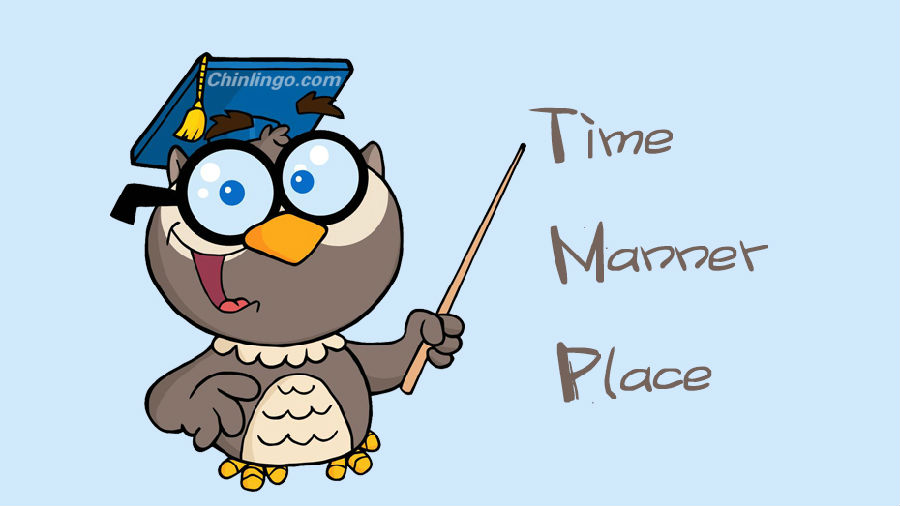
In Mandarin, extra information about time, manner and place is inserted in front of the verb. These are called adverbials, and always go before the verb. There's a specific sequence for them in Mandarin word order.
中文里,有关时间、方式、地点的附加信息放在动词前,称为状语。这些状语在中文词序里有特定的排序。
If you're not sure what order to put them in, just remember TMP (don't remember it backwards). This is a general rule of thumb that works most of the time. Just remember that it's not totally concrete.
如果你不知道按什么顺序,只要记住TMP(时间、方式、地点)即可。大部分情况下这是可行的经验法则。记住,这不完全详实。
Time 时间
The time the action took place is usually first.
动作发生的时间通常排第一
Wǒ *shàng ge xīngqī kànle sì běn shū.
我*上个星期 看了四本书。
*Last week *I read four books.
Manner 方式
The manner of the action comes after the time it took place:
动作方式在发生的时间之后
Wǒ shàng ge xīngqī cōngcōngde kànle sì běn shū.
我上个星期 *匆匆地*看了四本书。
Last week I quickly read four books.
Place 地点
Finally, you can say where the action took place:
最后,你可以提及动作发生的地点
Wǒ shàng ge xīngqī cōngcōngde zài wǒde fángjiān lǐ kàn le sì běn shū.
我上个星期 匆匆地在我的房间里看了四本书。
Last week I quickly read four books in my room.
Wrapping up 总结
As you can see, the word order rules in English are much less clear. For Mandarin Chinese, however, just remember TMP. Most of the time this is a good rule for the word order of adverbials in Chinese.
Sometimes it may be better to put this information elsewhere in the sentence, such as at the beginning. There a lot of general rules that govern Mandarin sentence structure, but few of them are absolute.
The best way to study this is to do as much listening and reading as possible. The more input you get, the more you get a feel for how the language works.
没有评论:
发表评论